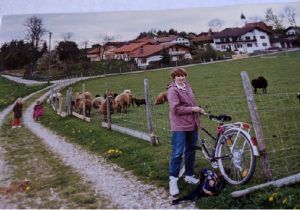by Phil Knight the founder of NIKE
I am not a runner but this book makes me want to run. It is exhilarating in its modesty and innovation. It goes well beyond a simply memoir. Packed with powerful business advice – very scary at times – we trace the evolution of an industry within the context of personal growth.
It took years of struggle to launch the “Crazy Idea” to create a superior sports shoe that Phil Knight proposed in his graduate class on entrepreneurship at Stanford University. This we learn.
The book has many levels. It can be read as a good history and life story about Phil Knight. Or, it can be analyzed as a competitor analysis with Adidas and Puma, or as a manufacturing and development analysis of the shoe making industry then largely located in Japan. It’s about sports and how shoes make the difference in speed and winning. It’s about Bowerman the University of Oregon coach who tinkered with shoes and a waffle iron making a sticky mess initially to create a new type of sole for running shoes. It’s about the chaos of a start-up and Knight‘s free reign management style of “Don’t tell people how to do things, tell them what to do and let them surprise you with the results”. Most importantly, it is about determination, fun, challenges betrayal and the loving support of family and a straggle of believers who moved Knight’s original company named Blue Ribbon to become the successful NIKE of today.
The spirit of entrepreneurship is evident in Knights curiosity, drive and resilience. He went beyond conventions and inspired his team even when failure seemed a certainty. His examples are specific which may be the result of his training and work as an accountant. With his practical side he assessed his weaknesses to then find his strength – example his did not make the baseball team and at his mother’s encouragement took up running instead. Running created his passion for shoes that would enable speed to win.
Knight’s curiosity was the catalyst for his global outlook. Fresh out of Stanford in 1962 he backpacked through Asia and Europe savoring the differences and learning about hardships. He was fascinated by Greek mythology and the Greek goddess of victory called Nike. His understanding of different cultures, communication styles served him well when dealing with the first shoe manufacturer in Japan.
Although shy and initially a failed salesman, he learned to sell his shoes and expand his small business rapidly. But, Knight’s story should be a warning to all who experience rapid growth. We learn that this very growth continually led to the near failure of his company. Warning: rapid success can lead to failure! Cash flow problems became the enemy and conservative banking practices required creative financing methods. It was a Japanese trading company based in Portland – trading companies were a new concept in the late 1960s – that gave Knight the financing to facilitate his rapid growth. The rest is history.
I recommend this book to many different audiences. The armchair reader, the business person or student. But, I suggest that the reader go to the very back of the book and read the last chapter
NIGHT and ACKNOWLEDGEMENTS first. This was my favorite part because it brings us to the present and the final look of the people who helped shape NIKE. It is a gracious ending to the story of NIKE.
Lucia Worthington teaches business and management at Clark College and is president of Worthington Management.


